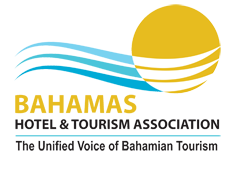National Trust Proposes Marine Park
But to make that happen, BNT officials say they are currently in the process of developing a proposal that they want to present to the government for approval by the end of the year.
Vanessa Haley, co-ordinator of the Southwest Marine Park Project, said her team has done a lot of groundwork to ensure the park proposal is completed by the end of the year.
“We are going to continue to have a series of public consultations because we’re not going to do this without getting stakeholder input, resource user input and the scientific evaluation,” said Haley.
“So from there really, it’s me writing the proposal and then submitting it to the Office of the Prime Minister for review so he can decide if the project is approved.”
Haley, who has been instrumental in getting the project up and running, added that public response to the proposed park has been positive.
“A lot of people agree that we need to protect our resources,” said Haley, who is also currently working on her doctorate in Biological Science. “When it comes to drawing the boundaries, that is where there is a lot of back and forth.
“Everyone realizes that someone is going to have to give up something for there to be a balance. Now what one party is willing to give up, that’s a different story.”
According to Haley, original estimates peg the overall cost of the entire proposed project at around $60,000. That price tag includes continuing to host a series of public meetings as well as having maps drawn up of the area.
But perhaps the most important piece of groundwork that went into the proposal was the Rapid Ecological Assessment (REA) carried out on the proposed park site last week.
Haley said the weeklong project that cost $9,000 to complete was instrumental in helping to collect data on the surrounding marine ecosystems.
The REA was conducted by a small group lead by Craig Dahlgren, senior research scientist from the Perry Institute of Marine Science in Jupiter, Florida.
Dahlgren and his team were stationed at the nearby Stuart Cove’s Dive Bahamas, where they teamed up with Stuart Cove’s staff and management to carry out the scientific research.
“We have a team of divers going in on a bunch of different sites representative of the [proposed park] area,” Dahlgren told The Nassau Guardian in an interview last week.
“They’re looking at different kinds of reefs at different depths, at different parts of the proposed park and seeing what the marine health is like and the different health of the marine resources.”
Dahlgren said his team would be looking at a total of 25 underwater sites that would cover about 15 miles of reef on the island’s southwestern coast.
“What I can say about this particular site is that for The Bahamas, at least, it has a very high diversity of fish species,” he said. “It has reefs that really vary in terms of their health. Some of them are in very good condition and some of them are in poor condition.”
Dahlgren, who has conducted similar ecological studies in The Bahamas for the past 18 years, said for this reason it was important that a national park be established.
“Creating a park here would be great from a scientific perspective in terms of providing some additional level of protection to the reefs and the marine resources here,” he said.
“They really need them in this area in particular because it’s really close to Nassau. It’s so close to so many people with all the associated problems.”
Agreeing with Dahlgren was Stuart Cove, owner of Stuart Cove’s Dive Bahamas.
Cove has literally earned his living in the waters off southwest New Providence where his popular business is located, and says he would like to see marine life in the area preserved.
In fact, BNT officials say he has been a huge supporter of the proposed project as he solely funded the REA.
“I think it’s important to have a marine park just because this is such a unique area out here,” said Cove. “We have the most diverse diving habitat and it’s probably more diverse than any other habitat in the world. We have great stocks of fish and some of the area is very healthy.
“But I’ve been diving out here since the early ’70s and I’ve certainly seen degradation over that time. This is such a good area and unless we preserve it, and have a park, we’re going to lose it.”
Cove, who currently employs 125 people at his internationally renowned diving destination, added that he believed the park would boost the slumbering economy.
“Divers spend about $3,000 each on vacation here,” he said. “They’re dropping a lot of that money around the community so it’s [the park] not only good for our locals to visit but also the tourists. We really need to look after it for ourselves first and then the tourists will follow.”
By JASMIN BONIMY
Guardian Staff Reporter

